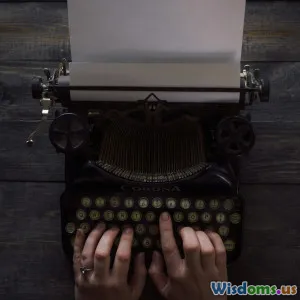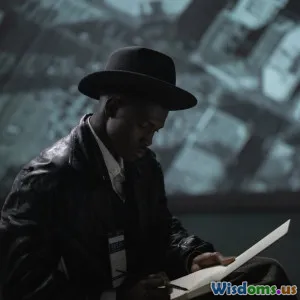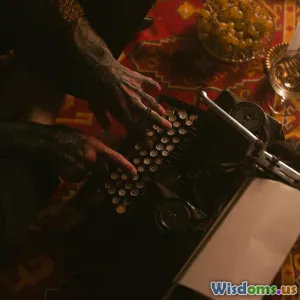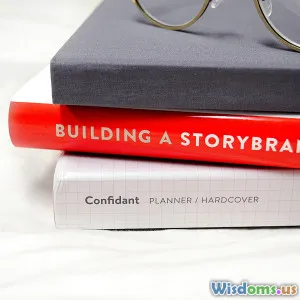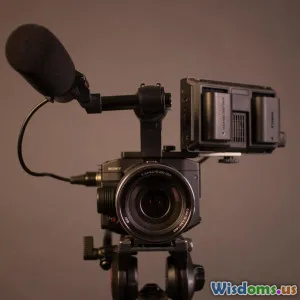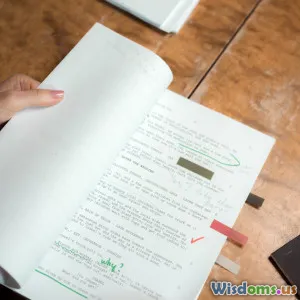
From Draft to Drama Polishing Scenes for Maximum Impact
20 min read Unlock techniques to refine narrative scenes, heighten tension, and craft powerful emotional moments for unforgettable storytelling. (0 Reviews)
From Draft to Drama: Polishing Scenes for Maximum Impact
Stories are forged in the fire of revision. Every writer knows the rush of nailing a first draft—immediate, raw, promising—but it’s the meticulous crafting afterward that elevates scenes into drama. Whether you’re scripting the next indie film sensation or nestling a narrative into the pages of a novel, learning how to intensely polish your scenes is pivotal for engaging your audience. This guide reveals targeted strategies for sculpting your drafts into magnetic, unforgettable moments that command attention and evoke emotion.
The Anatomy of a Scene: Purpose and Pulse
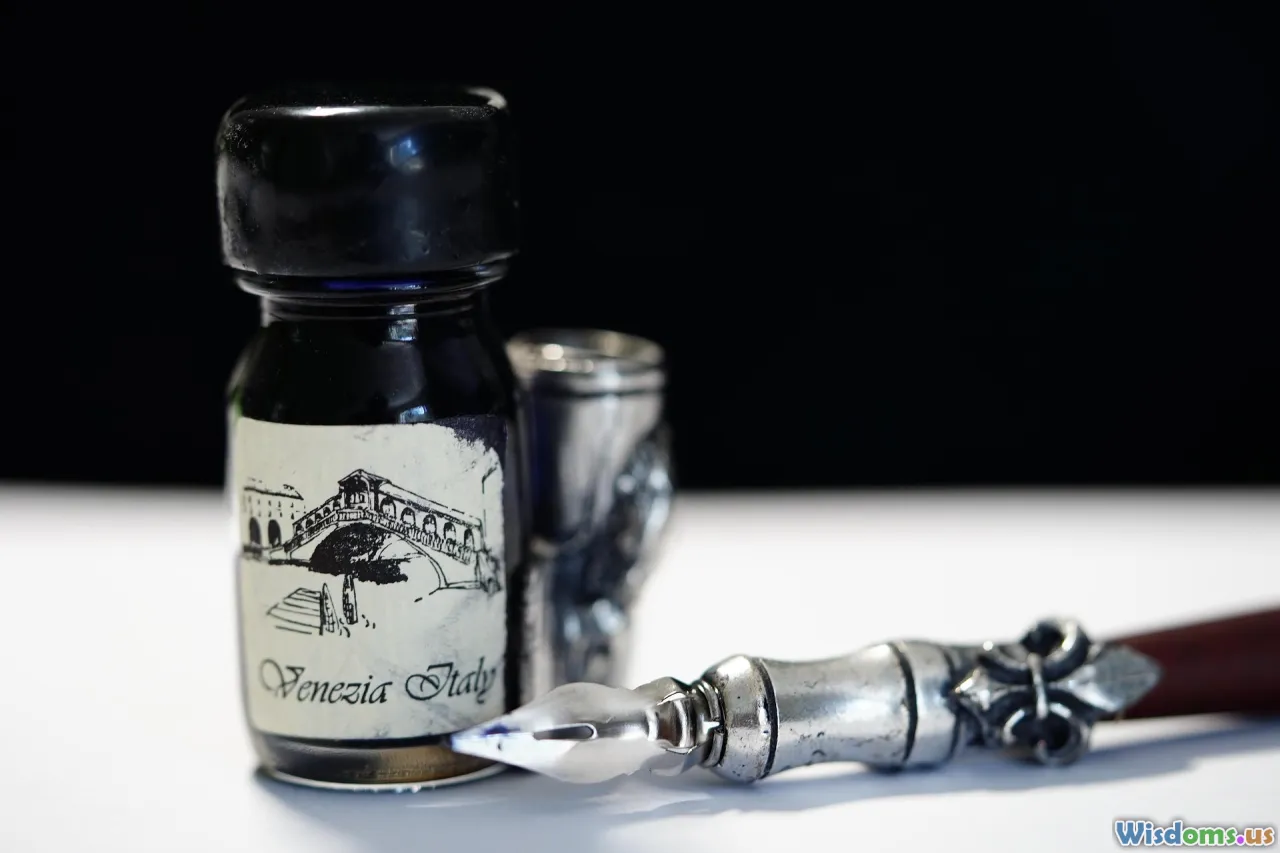
Before applying polish, step back and interrogate every scene’s reason for existence. A well-honed scene brims with purpose, advancing not only the plot but also character development and theme. Ask yourself:
- What does this scene achieve? Does it confront a protagonist with a challenge, reveal key information, or turn the plot in an unexpected direction?
- Is there tension? Even dialogue-driven or quieter scenes benefit from simmering undercurrents of conflict, anticipation, or anxiety.
- What’s at stake? Be specific. Stakes aren’t always world-ending disasters. Emotional stakes—a character’s pride, a moment of vulnerability—are just as potent.
🔎 Example: In "The Godfather," the restaurant scene (where Michael Corleone makes a life-altering choice) simmers with tension, forcing Michael to choose between his family expectations and his moral compass. The setting, dialogue, and minute actions all build toward a shattering climax—a masterclass in purpose-packed drama.
Dialogue That Crackles: Sound and Subtext

Stale or on-the-nose dialogue is the enemy of compelling drama. Elevate your scenes by sharpening what’s said—and what isn’t.
Key Polishing Strategies
-
Layer Subtext: Real people seldom say precisely what they mean. Let arguments cloak deeper feelings, and allow silences or digressions to suggest more than explicit statements ever could.
- Tip: In revision, highlight every line of dialogue and jot down the underlying emotion or intent. If two or more lines are identical in message, trim or combine them.
-
Economize Words: Does every exchange push the story forward? Remove pleasantries and filler unless they serve a specific function, like revealing awkwardness after a tragedy.
-
Distinct Voices: Ensure characters sound like themselves—not like mouthpieces for the author. Consider age, background, and education.
🔎 Example: Aaron Sorkin’s scripts pop with rapid-fire exchanges, but each character’s speech rhythm (think Zuckerberg vs. Sean Parker in “The Social Network”) is purpose-built. In novels, Jane Austen’s characters vary from Elizabeth Bennet’s wit to Mr. Collins’ pompous verbosity.
Setting the Stage: Transforming Description From Backdrop to Catalyst

Mundane descriptions lull readers into skimming. When refined, setting becomes an active ingredient—amplifying emotion, symbolizing themes, and shaping tension.
Actionable Techniques
- Anchor in Sensory Detail: Audiences experience scenes not only through sight but also sound, smell, taste, and touch. Which details are unique—metallic city rain, acrid forest smoke, sticky café counters?
- Embed Emotionally: Descriptions are not neutral; view the setting through your characters’ states of mind. A thunderstorm can be menacing or liberating depending on who is witnessing it.
- Interact With Setting: Set spaces in motion. Let characters manipulate their environments—clenching a photo before an argument, shivering against a draft, or drawing a curtain to shield secrets.
🔎 Example: In “The Shining,” the Overlook Hotel is as much a character as Jack Torrance. Stephen King uses oppressive architecture, ghostly echoes, and shifting weather as both backdrop and trigger, magnifying dread and isolation.
Emotional Dynamics: How Characters Change in Real Time

A scene that leaves a character—or a reader—in precisely the same emotional place at the end as the beginning squanders its potential. Revision means injecting movement—even in short spans.
Techniques for Heightened Drama
- Plan Emotional Trajectories: In each scene, note your character’s starting and ending emotional states. Ask: What shifts? A minor revelation might move someone from irritation to sorrow, or apathy to curiosity.
- Express Internal Change Physically: Rather than merely stating “She was furious,” externalize emotion—clenched fists, unblinking stares, or stumbling over words.
- Leverage Beats: Subtle cues (a character pausing before answering, accidentally breaking a glass) reveal dynamics shifting beneath dialogue.
🔎 Example: In “Breaking Bad,” Walter White’s micro-expressions and tightening body language during confrontations with Skyler signal guilt and panic before explosive outbursts, layering visible emotional oscillations through each pivotal scene.
Break the Monotony: Varying Pacing and Rhythm

Pacing isn’t just about fast vs. slow; it’s the artistry of modulating momentum to keep audiences hooked. During revision, scrutinize your scenes for monotonous flow.
Enhancement Strategies
- Manipulate Sentence Length: Quick, sharp sentences ratchet up action or anxiety. Longer, more reflective prose lets readers breathe and process emotionally fraught moments.
- Control Scene Duration: Not all moments need the same space. Critical scenes often “zoom in” on granular detail—slowed for maximum tension. Transitional scenes might be more impressionistic, fading in and out.
- Intercut Action and Reaction: Juxtapose dialogue with action beats; layer internal monologue with external chaos for a cinematic effect.
🔎 Example: In Gillian Flynn’s “Gone Girl,” swift, staccato prose in tense scenes (discovering the diary, police interrogation) contrasts with slower, tangled narration in introspective stretches, maintaining relentless narrative grip.
Entrenching Conflict: The Engine of Drama

Without meaningful conflict, even the most technically skilled scene can flounder. Polish not just for surface tension but for genuine, motivating opposition.
Questions to Inject Drama
- What does each character want right now? Desires can clash overtly (two people want the same job) or covertly (one wants attention, the other escape).
- What gets in the way? Blockers might be literal (locked doors) or internal (a fear of vulnerability).
- Why does it matter—now? Conflict is most riveting when the answer feels urgent. Raise the personal stakes at every pass.
🚩 Try This: For each scene, write a one-line conflict summary (“Lisa hides her criminal record as her new boss quizzes her about her past”), then look for places to make the opposition sharper and more specific.
🔎 Example: In the "Breaking Bad" finale, every conversation and gunshot slingshots from desperate, opposed motivations—each character fighting for a life, a secret, or redemption in real time.
Showing Versus Telling: When to Let Imagery Lead

The "show, don’t tell" mantra persists because readers engage deeply with scenes they can see and feel, not just comprehend abstractly.
Tips for an Impactful Balance
- Spot Passive Narratives: “He was sad” is less effective than “He stared at the wilted photograph, blinking back tears.”
- Leverage Visual Metaphors: Let actions and setting carry meaning (“Lightning forked over the horizon as she steeled herself to confess.”)
- Selective Telling: Some narrative moments—time jumps, or direct emotional statements to close out a scene—can benefit from concise telling. Don’t avoid it entirely; choose sparingly for contrast.
🔎 Example: Ernest Hemingway’s “Hills Like White Elephants” never states what the characters are discussing, but the dialogue, behavior, and landscape imagery whisper the truth between every line.
Dialogue Tags and Beats: Subtle Tools for Clarity and Tone

It’s easy for well-written dialogue to get lost in a sea of repetitive “he said, she said”—but equally easy to overburden lines with flashy attributions.
Advanced Techniques
- Favor Simple Tags: In fast banter, “said” and “asked” vanish, letting readers focus on the drama. Use descriptive tags only when absolutely necessary to clarify mood.
- Infuse Action Beats: “She fiddled with her coffee cup. ‘I’m not coming back.’” Action underscores and animates the conversation, breaking up dialogue and conveying tone.
- Trim Overexplaining: Let the subtext and action convey emotion. Instead of “he said angrily,” consider body language or terse word choices to reveal irritation.
🔎 Example: In Gillian Flynn’s “Dark Places,” dialogue is underpinned by nervy gestures—tapping feet, shifting gazes—anchoring each exchange within characters’ psychological states.
Cutting the Fat: Streamlining for Emotional Precision

Much of scene polish relies on what you remove, not what you add. Lengthy monologues, redundant phrases, and tangential subplots will muddy dramatic force.
A Precision-Editing Process
- Interrogate Each Line: Does it serve plot, character, or atmosphere? If not, cut or compress.
- Spotlight Repetition: Sometimes repetition can amplify emotion or tension—but too often, it signals a lack of confidence. Trust readers to remember key details.
- Sharpen Intent: Replace vague emotional descriptors with concrete cues (“She felt bad” → “Her cheeks burned and her hands fumbled with the napkin.”)
🔎 Example: In screenwriting, the fabled "Kill Your Darlings" advice often leads to scenes being halved in length, retaining only the essentials and creating a tighter, punchier narrative.
Feedback and the Second (and Third) Opinion

No author polishes alone. Outside feedback can reveal the flat spots you’re too close to see.
How to Harness Critique
- Read Aloud: Or better yet, have others read your scene. Clunky sentences, wan descriptions, and unnatural dialogue leap out when spoken.
- Varied Perspectives: Workshop your scene with writers, actors, or beta readers. Let them react—what confused them? Where was their attention fully captured?
- Targeted Questions: Don’t ask “Did you like it?” Go deeper: “Did you feel tension here?” “Were you rooting for or against anyone?”
- Iterate, Don’t Capitulate: Not all advice is golden. Consider consensus, but trust your instincts about your narrative goals.
🔎 Example: Pixar’s famed "Braintrust" meetings dissect scenes with surgical attention, focusing on what the audience will genuinely feel or understand in each moment. Films like "Toy Story 3" and "Inside Out" owe their emotional resonance to countless rounds of revision and group feedback.
Igniting the Senses: Multilayered Emotional Paint

Polished scenes fire off more than intellectual understanding—they stir gut responses. Let your revision tap all senses and emotional registers to deepen immersion.
Actionable Layers
- Soundtrack the Moment: What ambient noises underscore the action—the click of a clock, a siren’s wail, the hush of rain?
- Taste and Scent: Underused but powerful: the morning bitterness of black coffee, or summer’s cloying honeysuckle.
- Contradictory Emotions: Rarely does someone feel purely happy or sad. Layer ambivalence—a character laughing at a joke while dreading the conversation ahead creates complexity and relatability.
🔎 Example: In Chimamanda Ngozi Adichie’s "Half of a Yellow Sun," dinner scenes spill over with the texture of cassava, noisy family chatter, and a sense of impending upheaval—saturating readers in Nigerian life and its tensions.
The Invisible Thread: Foreshadowing and Payoff
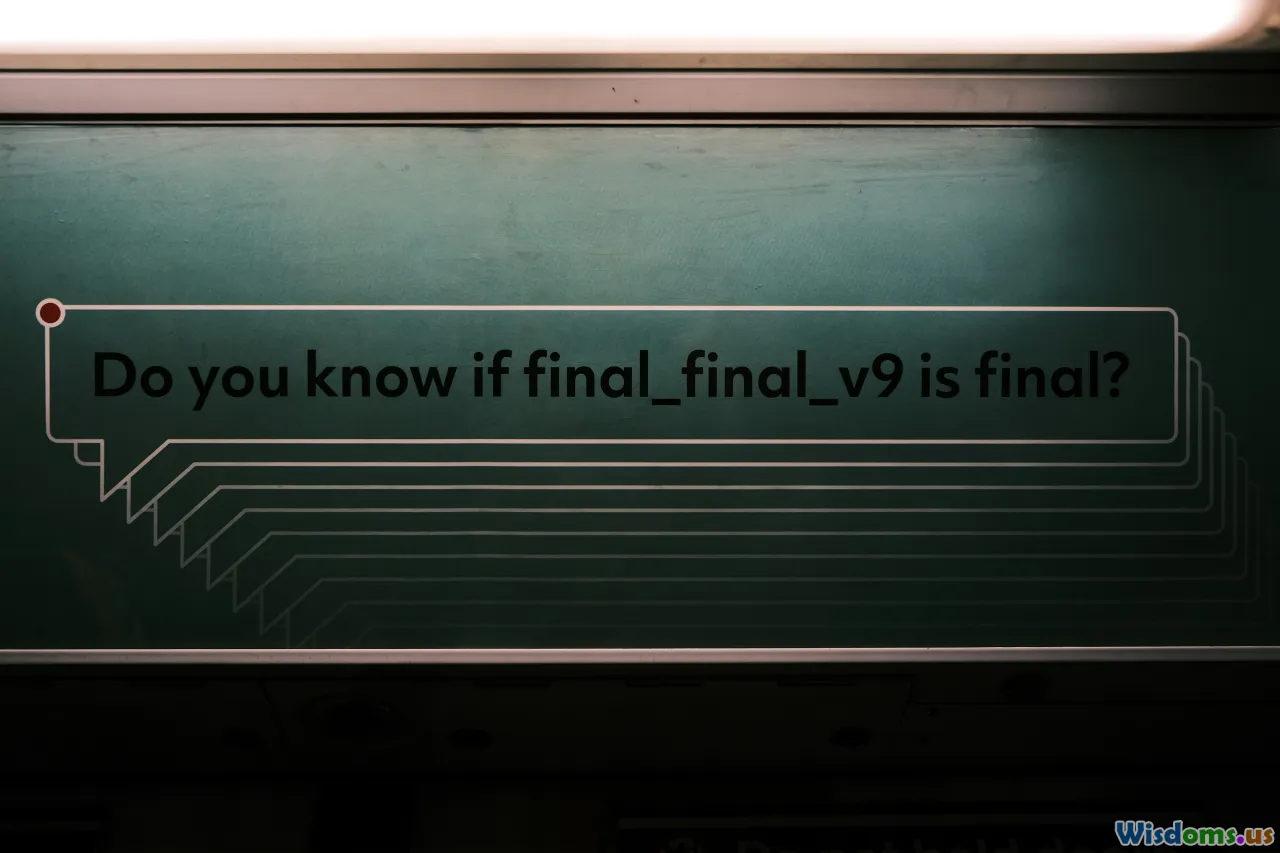
In drama, the most impactful scenes are often supported by groundwork laid in earlier pages. Strategic refinement ensures setups get satisfying payoffs, enhancing emotional engagement.
Crafting Connections
- Seeding for Future Impact: Plant seemingly innocuous props, lines, or ideas—a hidden letter, an overheard phrase—that blossom into importance later.
- Tighten Payoff: Each major action or revelation should feel earned, not arbitrary. Map backwards from significant beats—have you layered enough buildup?
- Minimize Coincidence: Drama feels most potent when twists arise from character decisions and cause-and-effect, not luck.
🔎 Example: The television show "Breaking Bad" masterfully threads blue meth, Lily of the Valley, and pink teddy bears as objects of both plot propulsion and thematic resonance, rewarding attentive viewers and readers alike.
Polishing Through Perspective: POV as Dramatic Leverage

Whose eyes we see a scene through shapes both revelation and suspense. Revising with point of view in mind can radically alter emotional effect.
Practical Considerations
- Deep Point of View: Immerse the reader tightly within a character’s head—filter senses, judgments, and worldviews through their biases and vocabulary.
- Shifting Perspectives: A shift, if employed skillfully, can reveal a new layer of truth or amp up the tension. Use with strategic intent, not as a crutch.
- Limit Omniscience: Unless going for a deliberate effect, avoid pulling back to "authorial summary" in key emotional scenes. Grounded, subjective experience is more gripping.
🔎 Example: In Gillian Flynn's “Gone Girl,” alternating Nick and Amy’s perspectives withholds and reveals emotional truths, keeping tension taut for the audience and controlling empathy.
When to Stop: Knowing a Scene Is Polished

The temptation to endlessly tweak is real. At some stage, embracing imperfection is pivotal.
Signs a Scene Is Ready
- Intent Achieved: Reread. Does the scene fulfill its dramatic, emotional, and narrative functions? Can you say, concretely, why it’s needed?
- Smooth Reading Aloud: Sentences make sense, dialogue lands, and you don't stumble or cringe.
- No Dead Weight: Every line, image, and gesture has purpose or charm—nothing feels "inserted to fill space."
- Gut Check: Despite any insecurity, a part of you is excited to share it. Listeners or readers respond—eyes wide, hearts pounding, laughter flowing—proving the polish is shining through.
Turning draft into drama is an intricate, repeatable process where art meets careful craft. Each scene offers another opportunity not just to tell a story, but to transport, provoke, and move your audience. Take your time. Strive for impact. And trust that when the final polish is applied, your scenes will pulse off the page or screen with irresistible force.
Rate the Post
User Reviews
Popular Posts










